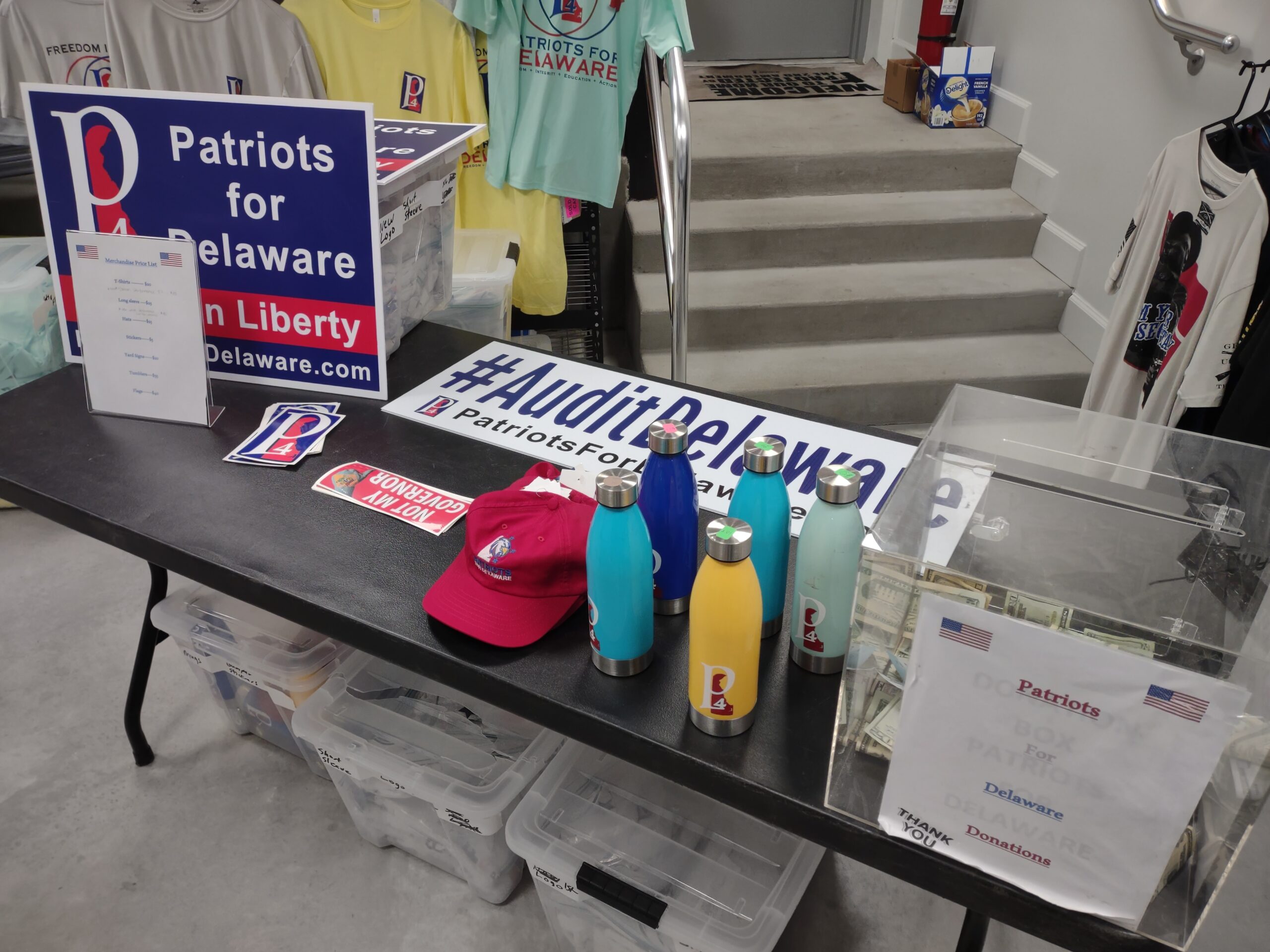This time, the circumstances were different but the crowd was about the same. Because it was held indoors in a place that was probably among the most dangerous in Delaware just hours before – the firing area of a shooting range – I opted not to make this a multimedia event, aside from the below photo, taken at a location outside the line of fire. (I will say the building is quite nice as it also features a couple classrooms that were just too small for the event and several axe-throwing lanes as well as the target practice area for shooting.)

The concerns were a little more pointed this time than they were last time I went in April of 2021 as well. We’ve now been through a year of the Biden regime and national concerns seemed to outweigh state concerns at this meeting, for obvious reasons.
So after reciting the Pledge of Allegiance and getting an invocation, the meeting began with P4D speakers Bill Hopkins and James Davison getting some words in. While reminding us that government doesn’t always have our best interests in mind, Hopkins exhorted us to do more than “just be a good American” because, in his estimation, “we’re really in deep.” He set us up for Davison, who spoke about the need for good candidates for the upcoming Delaware school board elections as well as following up on the work of P4D’s election integrity team, which was releasing a statement announcing their formal complaint contending hundreds of deceased voters are voting in Delaware.
Another interesting thing Davison brought up was the ongoing migration from Facebook to less biased forums like Gettr and Truth Social. Patriots for Delaware is apparently having issues with Facebook that parody sites like “the even more patriotic Patriots for Delaware” aren’t having.
Yet the subject on everyone’s mind was the upcoming Freedom Convoy. Our local one is being plugged by P4D, which has set up three rendevous sites around the state – the closest for folks like us is in Bridgeville – along with dropoff points for supplies to keep the truckers driving. While they need volunteers to organize and be points of contact, we found out Range Time agreed to be a dropoff point for this effort.
While the idea is sound, I’m hoping Patriots for Delaware doesn’t get too sidetracked on a concept which is already sort of being addressed by events. We don’t have it as bad as Canada does in this respect, and although a trucker’s convoy is a tactic that will get attention it’s my hope that the attention doesn’t go negative, particularly since our media won’t give it a fair shake whatsoever. Perception is reality, and although we have had plenty of issues with COVID enforcement I feel we need to keep our powder dry.
Being that we were at a shooting facility, we also spent some time listening to Mike Jones of the USCCA, and Larry Mayo of the Institute on the Constitution also spoke briefly on the need to learn “the law that governs the government.” But I was most surprised and excited to hear from my two-time monoblogue Accountability Project Legislator of the Year and the holder of the all-time best term score in Delaware history, Representative Rich Collins of the 41st District. (Range Time is in his district, lucky folks.)
Rich wistfully noted that, right now, “I have no more power than you do,” and cited four changes in his lifetime that had eroded things to our current state.
The first was the eliminination of the old Senate system where each county had five Senators. As I have said before, that was an offshoot of the incorrectly decided Reynolds v. Sims decision since Delaware had previously addressed the issue of equal representation with a House whose members were allocated by population.
Secondly, Collins bemoaned the rise of what he called the cabinet form of state government – simply put, unelected bureaucrats are making most of the state’s decisions by writing regulations. It’s why the government is now the state’s largest employer.
Third was an overreliance on “emergency” regulations, such as those addressing the CCP virus. “Covid will fade,” said Collins, “but what will be the next crisis?”
Lastly, the issue of one-party rule. Forty years ago, as I’ve also explained, this state was a singular shade of purple that comprised a true “swing state” even with just three electoral votes. Fast forward to the present day and, aside from pockets of Sussex and Kent counties, we are stuck with (generally very statist) Democrats.
Now that we are at this stage, continued Collins, the fact is that “money talks.” Not only should we financially back candidates we believe in, he advocated that Patriots for Delaware secure an attorney on retainer and establish a legal defense fund as part of their charge. One other thing he mentioned was that there’s an advocacy group called Delaware United that ranked him last in their legislative ratings. (While their methodology is different, their scorecard is basically the inverse of the monoblogue Accountability Project. In their case, to properly interpret their results it’s a lot like golf: the lower score, the better.)
That part was great. But I also attentively listened to the words of a current Delaware National Guard member named Butch Harmon, who spoke last. Speaking about the onerous CCP virus regulations, he said he was about to lose two good technicians because they chose not to get the jab. “We need to vote these folks out of office,” said Harmon. And rather than worry about the border of Ukraine, he continued, perhaps we should consider our southern border. (Worth mentioning: this meeting occurred before the Russian invasion of Ukraine, which may or may not have changed some opinions.)
As for their other subjects, the various school board elections will likely be the subject of a post next week. Now all we need is for Patriots for Delaware to figure out a venue for meeting in the Laurel/Seaford area so that some of these folks can see how this other half lives.


